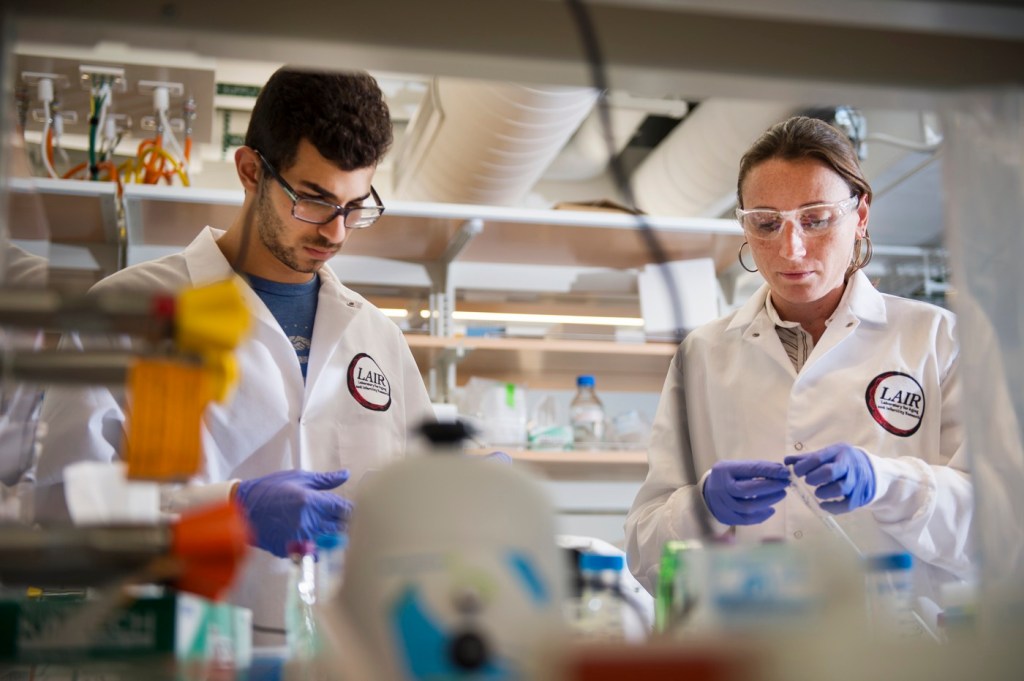Northeastern achieves highest classification for research activity

Northeastern University has moved into the top tier for research activity among higher education institutions, according to a leading classification used to distinguish U.S. colleges and universities.
The Carnegie Classification of Institutions of Higher Education on Tuesday released its 2015 classification, which includes 4,664 institutions nationwide. Northeastern is now one of only 115 universities in the “highest research activity” category, and was one of only 15 universities to move into that category since the previous ranking in 2010.
The classification signals the impact of the university’s strategic vision and investments over the past 10 years that have elevated Northeastern into a powerhouse on par with the nation’s elite research colleges and universities. It builds upon Northeastern’s unprecedented momentum, which includes continued investments in research and faculty recruitment, record-high student applications, and its historic fundraising campaign. With the updated classification, Boston now has a higher concentration of universities in the top tier for research than any other metropolitan area in the nation.
Under President Aoun’s leadership, the university has bolstered its commitment to use-inspired, cross-disciplinary research that addresses global challenges. In 2014-15, Northeastern secured $127.5 million in external research funding—compared to $48.7 million in 2005-06, and since 2006 the university has received 168 awards of at least $1 million. The forthcoming Interdisciplinary Science and Engineering Complex will mark a transformative moment for Northeastern’s research enterprise.
Over the past three years Northeastern has also conferred doctorates to 468 students, and since 2006 has hired more than 500 tenured or tenure-track faculty, many of whom hold joint appointments across colleges.
Northeastern, in recent years, has opened an innovation campus in Burlington, Massachusetts, anchored by the George J. Kostas Research Institute for Homeland Security; launched advanced new degree programs, including the nation’s first doctoral program in network science; was designated a Center of Academic Excellence in Cyber Operations by the National Security Agency; secured a $20 million agreement with the U.S. Army to conduct critical defense research; and was recently selected by NASA to partner on humanoid robot research. And a research team led by biology professors Kim Lewis and Slava Epstein discovered a new antibiotic that kills pathogens without resistance, research that captured headlines worldwide and drew praise from the scientific community.
Last week, Moody’s also revised the university’s A2 bond rating to a “positive” outlook, putting Northeastern—a global leader in experiential education, with its signature co-op program—among just 15 of 499 higher education institutions designated with a positive outlook.
The Carnegie Commission on Higher Education developed the classification in 1970, and the classification has been published eight times between 1973 and now. In fall 2014, the Carnegie Foundation for the Advancement of Teaching transferred responsibility for the classification to Indiana University Bloomington’s Center for Postsecondary Research, though the classification retained the Carnegie name.
“Although intended for research and policy purposes, the Carnegie Classification of Institutions of Higher Education has become an integral part of the fabric of higher education, as it is used by a variety of organizations for shaping accountability and opportunity,” Victor H.M. Borden, professor of higher education and student affairs at the IU School of Education and the director of the project for the Center for Postsecondary Research, said in a statement. Borden led the team that produced the updated classifications.
Northeastern’s Carnegie Classification is categorized under “Doctoral Institutions,” a designation for institutions that awarded at least 20 research or scholarship doctorates in the 2014-15 academic year. Institutions that meet this criterion are assigned into one of three categories based on a measure of research activity, which factors in universities’ research and development expenditures, science and engineering research staff, and the number of doctoral degrees they confer across several fields of study. These data are then used to create indices for both the aggregate level of research activity and the per-capita research activity.





